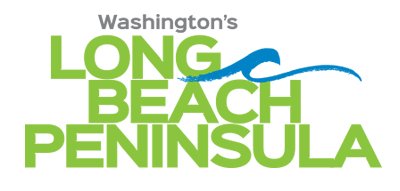Before there were lighthouses on the Peninsula, ships bound for Portland and Astoria navigated their way through the high waves and shifting sandbars, focusing on fluttering white flags and notched trees along the shoreline by day and flickering signal fires by night. These methods were crude at best and, despite heroic efforts, the sea offshore of the Long Beach Peninsula became known as ‘The Graveyard of the Pacific’.
The lighthouses of the Peninsula are favorite visitor stops both winter and summer. These historic lighthouses are two of 750 guarding the shores of the United States. Completed in 1856, the Cape Disappointment Lighthouse guides sailors into the mouth of the Columbia River from the south. The century-old North Head Lighthouse, completed in 1898, guides mariners approaching from the north. Both lighthouses were taken under the jurisdiction of the U.S. Coast Guard in 1939.
History of the Cape Disappointment Lighthouse
The Peninsula’s first lighthouse at Cape Disappointment had a bumpy beginning. As early as 1848, a government survey had recommended a lighthouse due to a large number of shipwrecks. Lighthouse construction materials were in route in 1853 and stashed in the hull of the Oriole when it sank two miles offshore. While a few items were salvaged, the bulk of the shipment was lost.
Problems continued to plague the project, including the discovery that a lantern for the lighthouse had never been ordered. A first-order Fresnel lens (invented at the turn of the 19th century by Augustin Jean Fresnel and constructed in Paris in 1841) was shipped from its first home at the Navesink Lighthouse in New Jersey. The lens used 18 wicks, burned five gallons of kerosene each night, and produced a light that could be seen 20 miles out to sea. It would cost more than $6 million to create today but was purchased for just $4,500 at the time. The 53-foot masonry lighthouse was completed in 1856.
In dense fog, the lighthouse originally rang out the deep, resonant tones of a 1,600-pound bronze bell as a warning. It was later learned that the configuration of Cape Disappointment had ‘dead spots’ where the bell could not be heard, and use of the bell was discontinued.
A smaller, fourth-order Fresnel lens replaced the first order lens in 1937. Rotated with electricity, the smaller lens generated a more powerful light and alternately flashed a one-second bright white light every 6.5 and 21.5 seconds. This rotation is a unique characteristic that identifies the lighthouse to passing ships. A revolving Crouse-Hinds searchlight replaced the Fresnel lens in 1950, and in 1998 the present marine rotating beacon light was installed. The existing light can be seen 17 miles out to sea. The original, first-order Fresnel lens is on display at the nearby Lewis and Clark Interpretive Center.
Both lighthouses were taken under the jurisdiction of the U.S. Coast Guard in 1939, but the North Head Lighthouse was recently transferred to the care of Washington State Parks and is currently undergoing restoration work. In the early 1990s, the Cape Disappointment light underwent a major renovation, complete with a new paint job with black and white stripes with a dark green top.
You can visit the lighthouse grounds by parking at the Lewis & Clark Interpretive Center and making a short, but steep, 1.5-mile hike. The trailhead for the Cape Disappointment Trail is on the left side of the parking lot. Be sure to bring proper footwear. The trail can get muddy at certain times of the year. If you aren’t up for a hike, you can view the lighthouse from the interpretive center. You will need a Discover Pass when you visit.
Did You Know?
- Cape Disappointment is the oldest functioning lighthouse on the West Coast.
- In 1788, British fur trader John Meares named the area Cape Disappointment after his inability to locate the river’s mouth.
